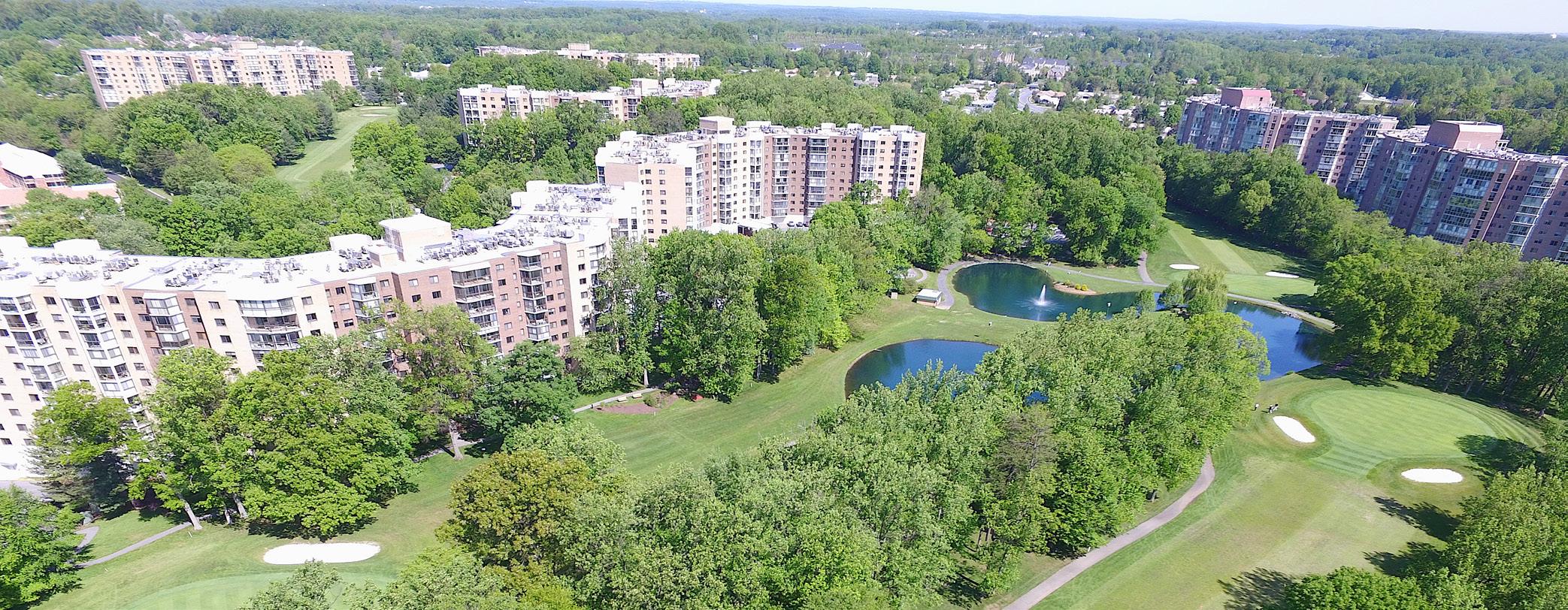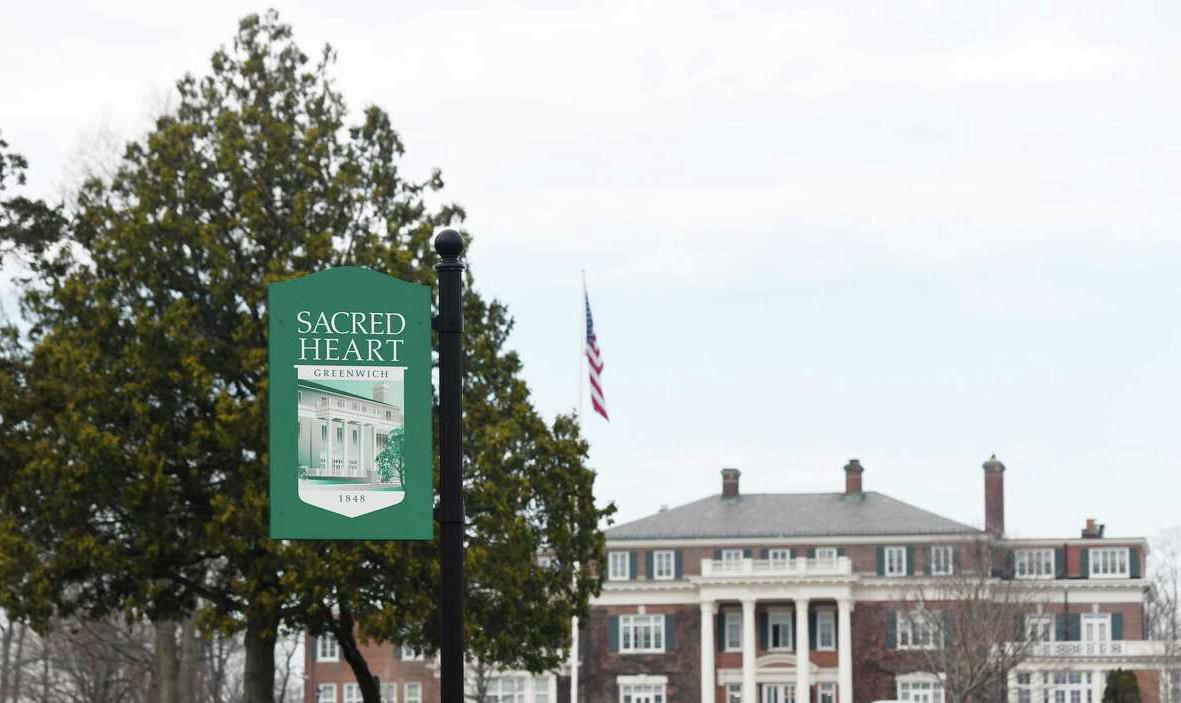
7 minute read
Leisure World Golf Course Recognized for Environmental Excellence
Leisure World Golf Course has achieved designation as a “Certified Audubon Cooperative Sanctuary ” through the Audubon Cooperative Sanctuary Program for Golf Courses. Frank McLaughlin Golf Superintendent, and Alan Nelson, Golf and Greens Committee Certification Project Manager, led the effort to obtain sanctuary designation on the property. The course is now one of 19 of the 160 courses in Maryland and 900 courses in the world to hold certification from Audubon International.
“Leisure World Golf Course has shown a strong commitment to its environmental program. They are to be commended for their efforts to provide a sanctuary for wildlife on the golf course property,” said Christine Kane, CEO at Audubon International.
Advertisement
“To reach certification, a course must demonstrate that they are maintaining a high degree of environmental quality in a number of areas,” explained Kane. These categories include: Environmental Planning, Wildlife & Habitat Management, Outreach and Education, Chemical Use Reduction and Safety, Water Conservation, and Water Quality Management. The Course’s accomplishments include:
• Expanding Native Vegetation
• Removing Invasive Plant species
• Providing quality wildlife habitat
• Conducting water quality testing
Leisure World of Maryland with its more than 8,500 residents is committed to maintaining its environmental programs.
The Audubon Cooperative Sanctuary Program for Golf Courses, endorsed by the United States Golf Association, provides information and guidance to help golf courses preserve and enhance wildlife habitat and protect natural resources. Golf courses from the United States, Africa, Australia, Canada, Central America, Europe, New Zealand, and Southeast Asia have achieved certification in the program.
Leisure World of Maryland has a beautiful, heavily wooded 18-hole, Par 70 championship golf course with Bermuda grass fairways and well-maintained greens. Planned renovations by McDonald & Sons are expected to be completed this summer which will further the course’s beauty and efficiency.
Kansas’ Ironhorse Retains ACSP Certification
Ironhorse Golf Club in Leawood, Kansas, has retained its designation as a Certified Audubon Cooperative Sanctuary through the Audubon Cooperative Sanctuary Program for Golf Courses. Ironhorse was first designated as a Certified Audubon Cooperative Sanctuary in 2014. After designation, courses go through a recertification process every three years.
Ironhorse Golf Club is one of only nine golf courses in Kansas to hold certification from Audubon International. Golf courses from the United States, Africa, Australia, Central America, Europe, South America and Southeast Asia have also achieved certification in the program.
“Ironhorse has shown a strong commitment to its environmental program,” Audubon International CEO Christine Kane said. “What they've done to give Kansas' wide variety of wildlife a place to thrive is the perfect example of how certification is a huge benefit to a course's natural setting, no matter where it is.”
Audubon Cooperative Sanctuary Program participation is designed to help course personnel plan, organize, implement and document a comprehensive environmental management program and receive recognition for their efforts.
“Ironhorse Golf Club is very proud to retain our designation as a Certified Audubon Cooperative Sanctuary through the Audubon Cooperative Sanctuary Program for Golf Courses,” Ironhorse Golf Club general manager Ryan Eckroat said. “Special thank you to Ironhorse superintendent James Kennedy who has spearheaded our certifications.”
Opened in 1995, the Michael Hurdzan-designed course is the only Troon-managed facility in the Kansas City metro area.

Sheep Ranch Adds To Bandon Dunes Certification Streak
TheSheep Ranch at Bandon Dunes Golf Resort is now a certified Audubon Cooperative Sanctuary for Golf course.
Opened in the summer of 2020, Sheep Ranch — a Ben Crenshaw-Bill Coore design with nine green sites hovering on rugged cliffs above the Pacific Ocean — keeps the popular southern Oregon resort’s ACSP for Golf certification streak intact. Beginning with Bandon Trails and the par-3 Preserve course in February 2011, continuing with Bandon Dunes and Pacific Dunes in June of that same year, then Old Macdonald inJuly 2016 and now Sheep Ranch, these six courses account for nearly a third of the 19 ACSP for Golf certified venues across the entire state.
“The certification in our minds brings more awareness around the topic of being environmental stewards and how golf courses can actually work in harmony with the natural environment,” says Ken Nice, Bandon Dunes Golf Resort’s Senior Director of Agronomy. “It's a great program and we’ve loved working with Audubon International. They have a love and appreciation for nature, something that we feel golf agronomy teams also resonate with.”
Australia’s Top 6 Clubs Join Audubon International, epar Program
This spring, Audubon International announced that following its recent partnership with Australian software and sustainability company epar, six Australian golf clubs have committed to pilot a new cloud-based approach that will provide richer and faster sustainability insights into their golf course operations.

The clubs are:
• Keperra Country Golf Club in Brisbane, Queensland
• Maleny Golf Club in Maleny, Queensland
• Margaret River Golf Club in Margaret River, Western Australia
• Peninsula Kingswood Country Golf Club in Melbourne, Victoria
• Royal Hobart Golf Club in Seven Mile Beach, Tasmania
• The Lakes Golf Club in Sydney, New South Wales
These clubs will be the first in the world to utilize the epar Connect 2.0 Audubon Certification program and create a positive social and environ- mental impact across their golf course operations. Based in Broadmeadow NSW Australia, epar works with like-minded sport sustainability allies to explore and develop innovative net-zero approaches, technologies, and nature-based climate change solutions that address the fundamental sustainability challenges facing golf. Along with parent company Environmental Business Solutions, epar works with clients to build capabilities – from identifying and measuring impacts, to scenario planning, to reporting on sustainable achievements, and maintaining a safe environment that will thrive in a low carbon future.
“When we partnered with epar, we knew it would revolutionize how our member clubs in Australia reach their sustainability goals,” says Christine Kane, Audubon International CEO. “Having these six prestigious clubs put the partnership into action in this new way is truly gratifying and exciting for all parties involved.”
Connect 2.0, epar’s innovative RegTech technology, has completely digitized the pathway of the award-winning Audubon Cooperative Sanctuary Program’s six certification modules — Site Assessment / Environmental Planning; Wildlife and Habitat Management; Chemical Use Reduction and Safety; Water Conservation; Water Quality
Management; and Outreach and Education. The cloud-based approach provides richer and faster sustainability insights into every golf course while recognizing and rewarding their efforts.
“These six clubs form a strong foundation for sharing golf’s leading environmental certifica-
Apes Hill Barbados
Earns ACSP for Golf Certification
Apes Hill Barbados, the luxuriant 475-acre property on the Island’s west coast, has achieved Audubon Cooperative Sanctuary for Golf certification for its 18-hole championship course from Audubon International.

The 18-hole championship golf course at Apes Hill Barbados was designed by the legendary Ron Kirby and opened for play in November 2022, and the state-of-the-art Golf Performance Centre debuted earlier this year.
While this certification is for golf, that is just one of many environmental best practices at the amenity-rich luxury resort residential community that is setting an inspiring, elevated standard in the Caribbean.
“Achieving Audubon International certification illuminates our sustainability commitment which is foundational to everything we do here,” said Sunil Chatrani, Executive Chairman, Apes Hill Barbados. “We didn’t just build another green sustainable golf course; we’re building an eco-system rooted in responsible behaviour that puts our people, our wildlife and our planet first.”
Following are some environmental initiatives that Audubon International commended Apes Hill Barbados for implementing:
• Irrigating exclusively with captured rainwater
• Reducing irrigation use
• Expanding acreage that requires less irrigation (mulch beds, drought tolerant vegetation, low maintenance vegetation) tion recognition program with clubs throughout Australia in a new, cutting-edge way,” says epar Founder and CEO Terry Muir. “We are excited to partner with them as they showcase their nature-based and urban-based climate solutions and build their compelling climate credentials.”
• Planting drought tolerant turf and vegetation
• Upgrading irrigation system to improve efficiency and distribution
• Analyzing weather data prior to irrigating
• Monitoring irrigation system to ensure efficiency and distribution patterns
• Installing part-circle heads to help eliminate water from going on cart paths and/or native areas
• Improving soil and turf health by using proper cultural practices including mowing, irrigation, fertilization, and compaction management
• Reducing overall chemical inputs by expanding acreage not requiring chemical treatment
• Introducing a new variety of turf that is less susceptible to disease
• Applying slow-release and organic fertilizers
Sustainability is a way of life at Apes Hill Barbados. With 60 acres dedicated to farming livestock, 30 beehives, vegetable gardens, and 17 acres for fruit trees, it is dedicated to preserving biodiversity. Planting passion fruit, lime trees, and other local trees helps reinforce a vibrant ecosystem. For more information visit www.apeshill.com.
Connecticut’s Sacred Heart Greenwich Attains Elite Sanctuary Certification Status
Sacred Heart Greenwich has put the environment first after becoming a certified Audubon Cooperative Sanctuary, only one of three schools in the country with the designation.

The Audubon Cooperative Sanctuary Program “helps organizations and businesses protect our environment while enhancing their bottom line,” according to a fact sheet made by Audubon International, an environmental organization aimed at creating sustainable surroundings.
Audubon International officially certified Sacred Heart Greenwich on Jan. 25, classifying it — along with American University and the University of Pittsburgh at Johnstown — as one of the three United States schools to be named a sanctuary.
“This shows our school’s strong commitment to sustainability and stewardship in five different categories: environmental planning, wildlife, water, resources and education,” a statement from the school reads. “These categories are the five key environmental components that the program uses to provide information to assist the participating organization or business.”
The program helps organizations and businesses assess their environmental resources, along with any practices that can cause harm. Then, through the program, the organization or business can develop a plan that fits its “setting, staff, budget and time.”
Organizations and businesses of all types can implement the program. Other types of establishments that can be certified or have already been certified include resorts, parks, cemeteries and more.
Recertification needs to be completed every three years.
Audubon International created the certification process to allow a hands-on process, ensuring that the program is tailored to the establishment’s
“unique property,” while also encouraging the participating organizations and businesses to take action on the program’s five key environmental components, the organization said.
“Achieving certification demonstrates an organization’s leadership, commitment, and high stan- dards of environmental management,” according to the fact sheet. “To be designated, personnel develop and implement an environmental management plan and document the results.”









